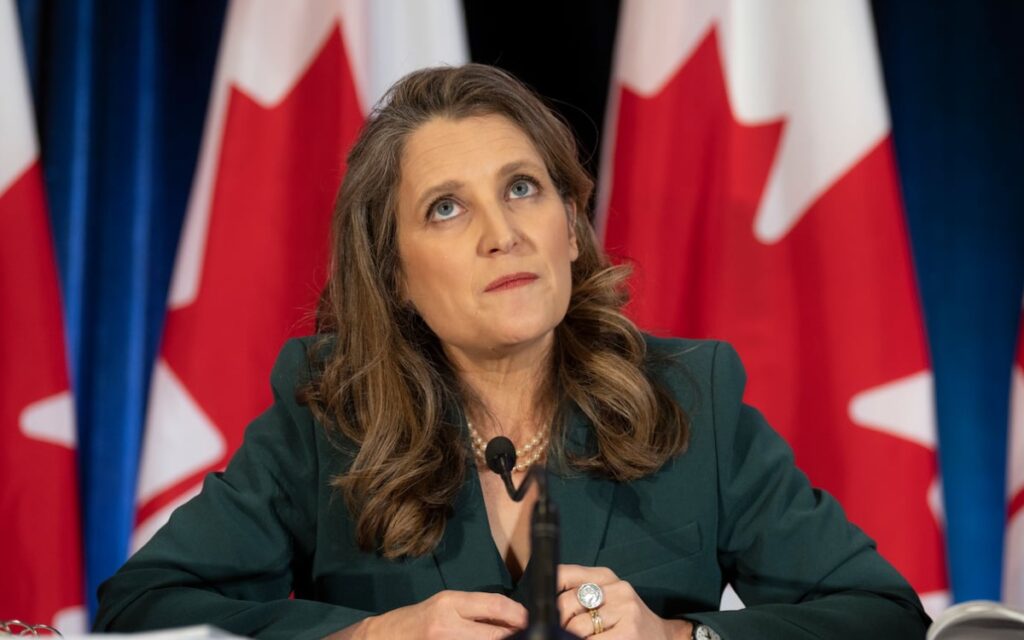
The Canada Pension Plan (CPP) undergoes a significant evolution, shifting from a traditional approach to investment towards a more politically aligned strategy, sparking concerns among investors about its impact on financial returns. Photo: The Canadian Press/Adrian Wyld
It seems that it’s not your father’s CPP anymore. For the first few decades of its existence, the CPP was a very boring pension plan that employed just a handful of people, invested Canadians’ mandatory contributions very conservatively, produced modest and consistent investment returns and paid older Canadians a reliable monthly amount. The demographics of the baby boom generation helped CPP a great deal, as the CPP came into existence in 1965, when the early baby boomers were first starting to enter the workforce in their massive numbers. Baby boomers therefore started paying into the CPP when there were many fewer retired Canadians, such that the system could sustain itself even though it was not an established fund but rather a “pay as you go” system when the people paying into CPP directly funded those collecting CPP pensions.
In the late 1990s, the Liberal government changed the financing of the CPP and created an actual investment fund separate from the government’s general revenues. This was a very good move considering demographic realities and it got away from the “pay as you go” model which was financially unsound toward an actual funded pension plan whose assets earned a rate of return annually and had properly evaluated actuarial foundations. The new fund was to be managed by a new government entity – the Canada Pension Plan Investment Board (CPPIB).
Given past mismanagement of CPP monies, the Liberals had to almost double CPP premiums to make this change feasible, but it did mean that the plan was financially sustainable for many decades to come. Given how Canadians value the CPP and count on it as a key part of their retirement income, there was general support for this change despite the fact that employers and employees had to significantly increase their payment of CPP premiums.
Since that change, the CPP investment fund has grown immensely to reach almost $600 billion. As such it is among the top 10 pension funds in the world in terms of assets. Since the Liberal changes to put the CPP on a more stable financial footing in the late 1990s, however, the CPPIB has grown significantly to include many more staff making very high incomes comparable to the well paid private sector investment firms on Bay Street and Wall Street, and making many more risky investments than their predecessors.
Recent developments have led to CPP investments not necessarily being the best from the perspective of their rate of return to Canadians but rather their political alignment with the government of the day. A recent Fraser Institute report noted how the pursuit of ideological goals by public pension plans was becoming more widespread. In the case of the CPP, although its mandate is to earn the best financial return on assets, recent objectives of the fund have included such things as pushing society toward “net zero” emissions by encouraging government regulation and imposing environmental obligations onto corporations that it invests in. The Fraser Institute analysis concludes that when the CPPIB takes its eye off achieving the maximum investment return, it not surprisingly costs Canadians money by settling for lower returns on their investments. The Fraser report can be found here.
This week’s Financial Update by Finance Minister Freeland widened the scope of the CPPIB to invest more broadly on the basis of political criteria, not investment returns, and also mandated that there will be more detailed reporting by the Board as to what sectors and industries in which it has invested. This enhanced reporting requirement is presumably to highlight whether the fund is investing in such things as the oil and gas industry or pipelines. The CPPIB has invested in fossil fuel companies and pipelines in Canada and abroad in recent years, as they produce a very good rate of return. To reduce these investments in future implies lower returns, especially considering the very positive prospects for the oil and gas industry in the coming years.
The notion of the Board not being able to make these lucrative investments for political reasons should alarm all Canadians. We are all forced to pay into CPP, and the least we could ask for is that our money is invested in a way that achieves the maximum possible return. The notion that the Liberal government wants to alter the basic investment goals of the CPP that have been in place for decades should be of major concern to all Canadians.

She has published numerous articles in journals, magazines & other media on issues such as free trade, finance, entrepreneurship & women business owners. Ms. Swift is a past President of the Empire Club of Canada, a former Director of the CD Howe Institute, the Canadian Youth Business Foundation, SOS Children’s Villages, past President of the International Small Business Congress and current Director of the Fraser Institute. She was cited in 2003 & 2012 as one of the most powerful women in Canada by the Women’s Executive Network & is a recipient of the Queen’s Silver & Gold Jubilee medals.






